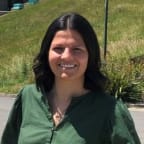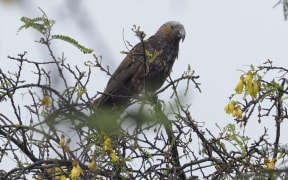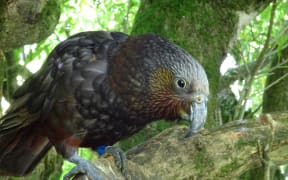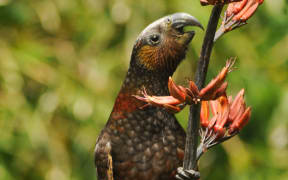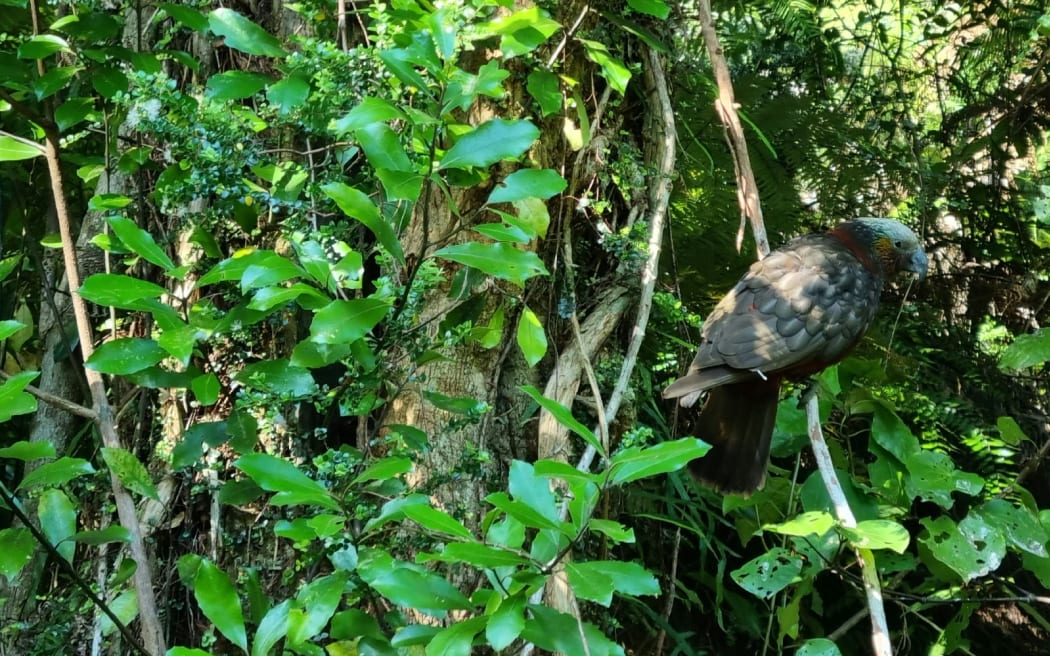
A female kākā in Abel Tasman National Park. Photo: RNZ / Samantha Gee
Conservationists are celebrating the success of a wild kākā breeding programme at the top of the South Island.
Ten years ago, less than a handful of the forest parrots roamed the Abel Tasman, our smallest but most visited national park.
This season, a number of wild kākā chicks are set to fledge any day - that success down to the hard work of several organisations working together to bring the birdlife back.
Project Janszoon director Bruce Vander Lee said when the organisation was established in 2012, there were less than a handful of male kākā in the park.
"We call it functionally extinct. There were only males left, and the reason populations with predators often have only males left is because the females get killed on the nest holes, so you can see what would happen to this bird - if a stoat climbed into that hole, she has nowhere to go."
Project Janszoon is a privately funded trust working to reverse the ecological decline in Abel Tasman National Park, working closely with the Department of Conservation, tourism operators, volunteers and iwi.
Female kāka were reintroduced into the park in 2015, after a survey two years earlier identified there were only four wild males.
Since then, 35 captive raised kākā have been released into the park, the last in 2019.
This season, six nests have been identified at Bark Bay and one - visible from the coast track - has been named the "Beach Nest" due to its proximity to the sea.
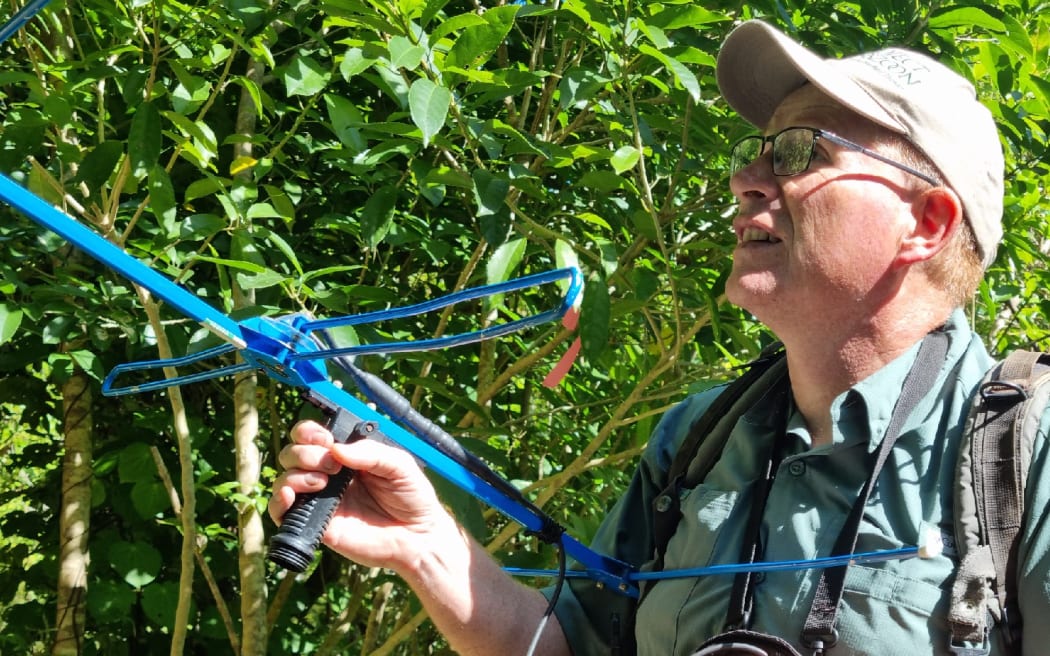
Project Janszoon director Bruce Vander Lee. Photo: RNZ / Samantha Gee
It is the first time this particular bird has bred. The female kākā hatched from an egg taken from the Wangapeka in 2018, was captive-bred and released into the park in 2019. She's now raised two chicks, who are soon to leave the nest.
Vander Lee said there were now thought to be between 30 to 40 kākā in the park and they had become a common sight, and sound, along the coast near Bark Bay.
The return of the forest parrot to the Abel Tasman coastline is just one of Project Janszoon's success stories over the last decade.
The trust has just celebrated 10 years. It was the first site chosen by the NEXT Foundation, established by philanthropists Neal and Annette Plowman.
Project Janszoon is also worked to remove wilding pines, control coastal weeds and trial new trapping technology alongside protecting native carnivorous snails and translocating hundreds of pāteke, or brown teal, into the park.
"One of our key metrics for success is that we see our forest birds increasing in their distribution. What we knew when we started was they were limited to a very high elevation area that had lower rat numbers, but we wanted to see them expand to the rest of the park," Vander Lee said.
That change was also due to the extensive trapping networks covering the majority of the national park.
The Abel Tasman Birdsong Trust was established in 2007 as a way for tourism operators to contribute to predator control and other biodiversity initiatives.
Trust co-ordinator Abby McCall said commercial operators paid a Birdsong Levy for each customer they brought into the park.
"The first trap line started from Mārahau, think it was 83 traps to start with and it's sort of morphed into us controlling predators right along the coastline and doing quite a big restoration project for food source for birds."
More than a hundred volunteers check the traplines every two weeks and McCall said since the trust was established, the birdlife in the park had increased significantly.
Department of Conservation northern South Island operations director Roy Grose said the partnerships showed how a collaborative approach to conservation could improve biodiversity.
"The Abel Tasman has been a terrific example of being able to work together and then being able to showcase the biodiversity gains in a really tangible way.
"When you see dead pines on the horizon and you notice the amount of birdsong, you see kākā chicks, it's all a result of a huge amount of effort behind the scenes collaboratively of working together doing predator control to increase bird life, lizards, insects and all that biodiversity that matters."
Grose said the ecological gains in the park were an investment into the future for all New Zealanders.
